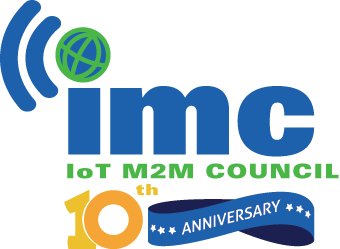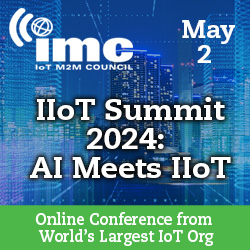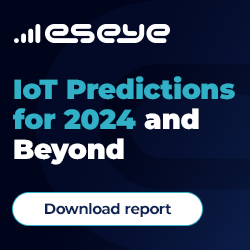AI at the Edge: IMC Online Conference Report
- April 21, 2021
- William Payne

A recent IMC online conference on Industrial IoT tackled the two hot topics of edge computing and AI/ML. Speakers drawn from Losant, Eurotech, Digi, Software AG and Aeris examined the opportunities and challenges of implementing AI at the Edge for industrial and manufacturing companies.
In his keynote to the session, Charlie Key, Chief Executive of Losant, defined the opportunity of industrial IoT as value generated on all sides: for both customer and manufacturer.
For the customer, it brings the benefits of simpler, more turnkey solutions, remote visibility and real time alerting, all adding up to faster and better customer support.
For manufacturers, IoT brings greater customer satisfaction together with recurring revenue opportunities and new customer usage insights, leading to greater competitive advantage.
Covid is driving new use cases and accelerating innovation, as people on site with clipboards are increasingly replaced by remote monitoring. Another change being hastened by Covid is a shift from preventative maintenance to condition based maintenance, with real-time sensor measurements becoming a key enabling technology.
Robert Andres, Chief Strategy Officer at Eurotech SpA, a company that produces embedded and industrial controllers, gateways and systems, addressed the theme of enabling AI at the furthest Edge.
Eurotech has pioneered the development of the Everyware Software Framework (ESF), now at version 5.0.
A key IoT component within Redhat Linux, ESF provides edge computing-based containerised workloads with simplified connections of industrial and embedded devices to IoT cloud services, including Amazon AWS, Microsoft Azure and Eurotech’s own Everyware Cloud. ESF 5.0 provides a low code graphical environment for specifying data collection, routing, storage, aggregation and transformation of industrial data, and supports OT protocols including Modbus and OPC-UA.
According to Andreas Burghart, Senior Product Manager at Digi, a company that produces IoT modules, gateways, cellular routers and networking devices as well as a range of software and professional services, the successful IoT strategy comprises three stages: rapid connection and moving at speed; scale-out and deployment; and optimisation and innovation.
The company works a number of sectors, including industrial, energy, medical, retail, transportation, and smart cities.
In the industrial sector, Digi focuses on industrial equipment monitoring, with neural network-based audio analytics deployed to assess upcoming failure events. At present, the company enables predictive maintenance of industrial equipment. It is developing AI to provide prescriptive advice to change equipment operations to extend time-to-failure.
Firms investing in AI face an acute data scientist shortage which is constricting their ability to get AI projects into production, said Philip Hooker, VP Strategic Programmes Cloud Innovation at software specialist Software AG.
There are three times more job postings for data scientists than searches, pointing to an acute shortage. Once employed however, firms are expending 87 percent of their data scientist time on non-data science tasks, pointing to a wastage of rare resources. Perhaps as a result, only 14.6 percent of firms are currently getting AI projects into production.
The answer, said Mr Hooker, is threefold. Firms need self-service tools that are aimed at domain experts, allowing the on-the-job experts to create machine learning algorithms without the need for data scientists.
Companies also need machine learning lifecycle management tools. Large-scale enterprise software development and maintenance cannot execute effectively without software lifecycle management, and few firms nowadays would attempt it without such tools. For machine learning to move beyond a few pilot projects to enterprise wide deployment, it needs similar lifecycle management.
Machine learning also needs to scale across the enterprise hardware stack, from cloud, through core, to edge.
For Syed Zaeem Hosain, CTO at Aeris, machine learning and AI at the edge will become increasingly vital as data volumes in industrial IoT continue to grow. IoT data haystacks are enormous, Mr Hossain said, and are growing. Sending these to the cloud for analysis will become increasingly expensive. Edge AI processing is a cost effective solution to this burgeoning problem.
Edge AI and machine learning also help enterprises scale out industrial and OT AI, and improve security, as they reduce the risk of critical data exposure over external networks.




